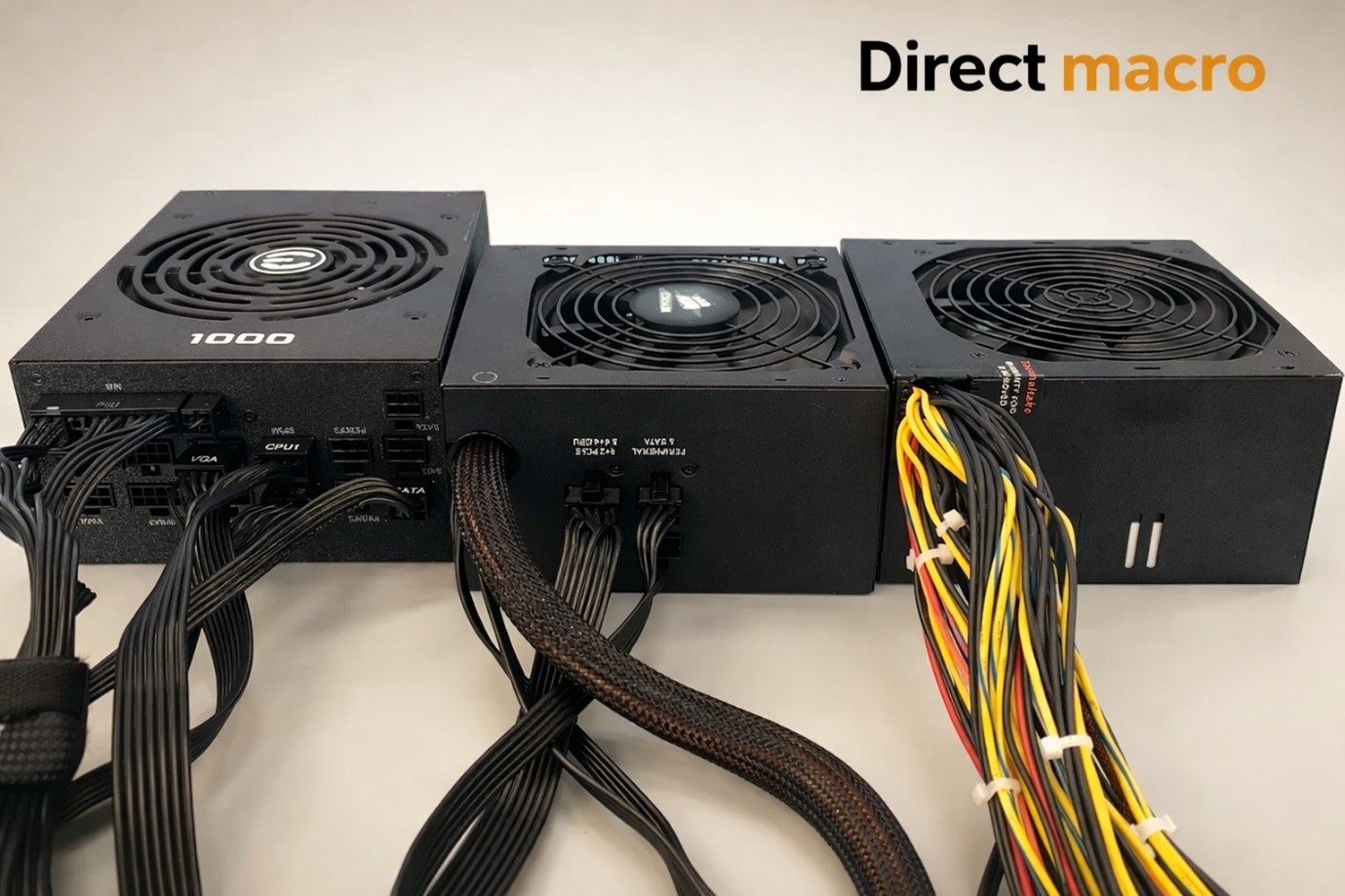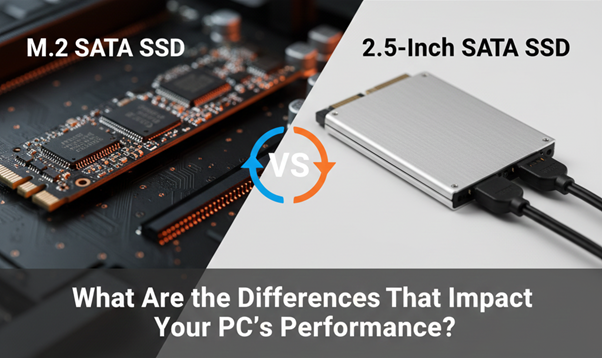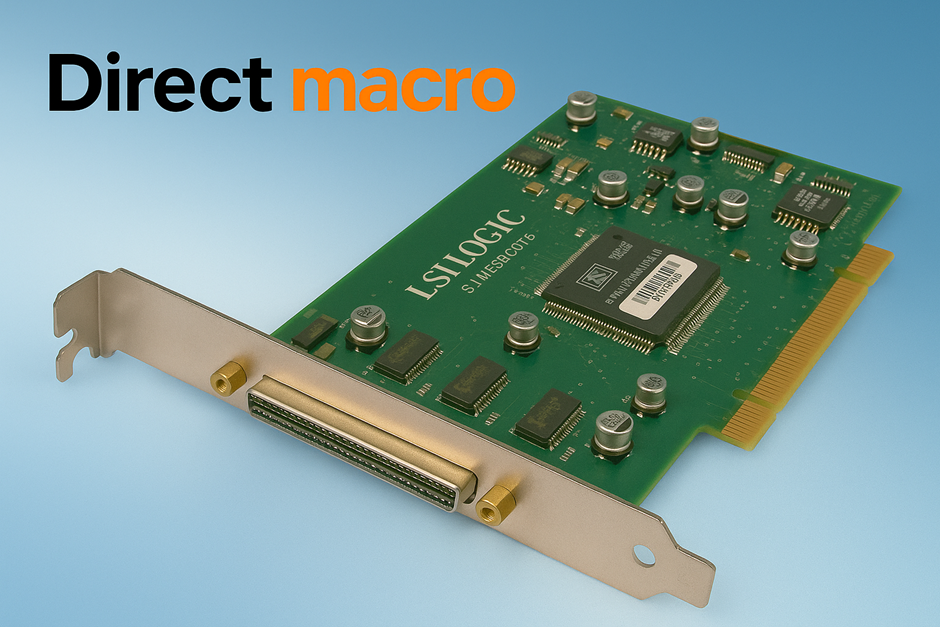Tape Storage Vs Cloud Storage: Which One Is Best for Long-Term Data Retention
As data generation increases at an exponential rate, people and organizations are searching for trustworthy services for long-term data retention. Tape storage and cloud storage both are the popular options. Both have unique benefits; however, the selection of either solely depends on the scale, needs, and compliance requirements. In this guide, we’ll examine the comparison between tape storage vs cloud storage, its performance, reliability, cost, and other relevant factors of tape and cloud storage, especially for businesses dealing with massive datasets and having long-term archival requirements.
Overview: Tape Storage vs Cloud Storage
The decision to go with tape or cloud storage is not universal. It depends on different factors like budget, data quantity, and other metrics like RTO – recovery time objectives, RPO – recovery point objectives, security concerns, and regulatory compliance requirements. While cloud storage is gaining popularity for its ease and scalability and magnetic tape data storage is still useful for demanding high security, low cost for massive archives, and infrequently accessed data.
Tape Drive vs Cloud Storage Performance
When talking about tape drives vs cloud storage performance analysis, it’s important to assess how each medium handles read and write operations, access latency, and throughput. Magnetic tape storage drives have long been trusted for their durability and affordable long-term archiving. On the other hand, with the evolution of technology, cloud storage has advanced, offering high-speed access, better scalability, and instant recovery capabilities. Let’s break down the performance differences of tape drive vs cloud storage through the key metrics:
1. Tape vs Cloud Storage Speed Comparison
When it comes to performance in terms of speed comparison, both storage methods offer decent features, but they serve different use cases. Tape drives typically operate at a slower data transfer rate compared to advanced cloud infrastructure. On the other hand, modern magnetic tape systems can reach speeds of up to 300 MB/s, and cloud storage solutions often surpass 1000 MB/s thanks to distributed servers and network optimization
Comparison Chart
| Feature | Tape Drive | Cloud Storage |
| Access Type | Sequential Access | Random and Parallel Access |
| Write Speed | ~300 MB/s | ~1000 MB/s |
| Read Speed | ~300 MB/s | ~1200 MB/s |
| Scalability | Manual expansion | Auto-scalable |
| Best For | Cold archival data | Real-time data access |
2. Tape vs Cloud Read/Write Comparison
Let’s look at the performance of both media in critical contexts for read/write capabilities. It outlines their performance for critical tasks. Here is the focused Comparison of Speed, Read, and Write Capabilities of tape drive and cloud storage:
- Tape Drive: It offers sequential access at a static read/write speed of approximately 300 MB/s. Tap drive is best for static, large, and infrequently accessed datasets.
- Cloud Storage: It offers high-speed random access with read speeds of up to 1200 MB/s and write speeds up to 1000 MB/s. Cloud storage is best for real-time applications and big data workflows.
Comparison Chart
| Operation Type | Tape Drive Speed | Cloud Storage Speed |
| Read Speed | ~300 MB/s | ~1200 MB/s |
| Write Speed | ~300 MB/s | ~1000 MB/s |
| Access Time | Minutes to hours | Milliseconds |
| Concurrent Access | Not supported | Fully supported |
Note: There is a crucial difference in workflow between magnetic tapes and cloud servers. While magnetic tapes operate linearly, and cloud servers allow simultaneous access from multiple devices, this drastically improves throughput.
3. Recovery Time Differences
Speed of recovery can make or break your data strategy. While tape drives may delay recovery speed due to their physical nature while the cloud is ideal for fast recovery.
- Tape Drive: It requires manual retrieval and sequential access, which can take several hours.
- Cloud Storage: Cloud storage offers instant or near-instant recovery due to availability and redundancy.
Comparison Chart
| Factor | Tape Drive | Cloud Storage |
| Recovery Time | 8–24 hours (manual) | Instant to a few minutes |
| Physical Retrieval | Required | Not required |
| Automation Support | Limited | Fully automated |
| Ideal Use Case | Long-term archive | Business continuity |
Cloud Storage vs Tape Drive for Business Backup
Choosing between cloud storage and tape drives for business backups involves a timeless debate of weighing accessibility against cost and recovery strategies.
1. Cloud vs Tape Storage for Business Use
Cloud storage is always a go-to business advantage as it offers ease of access and off-site protection by default. It works great for daily incremental backups and quick recovery of data. Tape storage has an air-gapped solution, which means data is physically disconnected from the network and offers unparalleled protection from cyber threats like ransomware. Many businesses use a Hybrid Backup Strategy, using the cloud for daily backups and tape for long-term, cost-effective archives.
2. Small and Medium Business Use Cases
Small and medium businesses with limited IT resources and similar organizations always consider cloud storage as the dominant solution due to its ease of deployment and management. Many providers of SaaS Cloud Storage Services have straightforward and self-sustaining backup procedures. However, the combination of noticeably rising volumes of data and limited cloud storage leads to climbing spending. Tape storage is a go-to solution for SMBs, small and medium businesses, as the data can be archived and fetched without incurring significant costs.
3. Data Access and Management
Cloud storage excels in offering instant data availability, advanced search, and centralized access, and Tape systems require manual intervention or robotic systems for data retrieval.
Difference Between Tape Drives and Cloud Data Storage
The essential difference between tape drives and cloud data storage depends on their architecture and operational models. Let’s find out the technical difference between tape drives and cloud data storage:
- Tape Drives: These are physical hardware devices that store data on magnetic tape. Tape drives are ideal for long-term backup and storing large files since data is saved sequentially.
- Cloud Storage: It operates on remote servers managed by third-party providers. The cloud system has a distinct advantage over tape storage since the data is stored in different data centers, enhancing data protection and providing access to the information from anywhere in the world.
The most notable and essential difference between the two technologies is the level of access to the stored data. At the same time, tape drives provide an offline backup system. On the other hand, cloud services store information in a modern, online manner through the internet.
Tape Libraries vs Cloud Storage for Automated Backups
Automation is very important for businesses that need to back up a lot of data. The Comparison of tape libraries vs cloud storage for automated backups shows that there are different ways to achieve this.
1. How Tape Autoloaders Work?
Tape autoloaders and libraries are automated systems that store several tape cartridges and one or more tape drives. Robotic arms automatically load and unload tapes into the drives according to a set schedule, which means that backups can be done without any manual intervention. This allows you to back up and store a lot of high-volume data.
2. How Does Cloud’s Automated Daily and Weekly Backups Work?
Cloud storage services are great at offering highly automated backup solutions. Users can set up backups that run in the background everyday, weekly, or even all the time without manual intervention. Cloud storage is a popular choice for routine operational backups because of its automation and off-site replication.
3. Reliability Comparison
Both systems are reliable, but they perform it in different ways. Cloud storage providers offer redundant storage across several data centers, so your data will still be available even in the event of a regional disaster. On the other hand, the tape storage is reliable because it is physically separated from other things (an air gap) and the durability of the tape media itself, which is designed for long-term integrity.
Comparison Chart
Here is a comparison table for Tape Libraries vs Cloud Storage for Automated Backups:
| Feature | Tape Libraries | Cloud Storage |
| Automation Method | Uses autoloaders and robotic systems to manage cartridges | Automated via provider dashboards with configurable schedules |
| Setup and Management | Requires initial setup; minimal human interaction afterward | Easy setup with intuitive UI and automated workflows |
| Backup Scheduling | Scheduled backups can be programmed in advance | Daily/weekly automatic backups with version control |
| Alerts and Monitoring | Limited built-in alert systems | Real-time alerts, monitoring, and failure notifications |
| Disaster Recovery | Slower recovery time; physical transport may be needed | High redundancy and fast recovery from anywhere |
| Security and Cyberattack Risk | Immune to ransomware due to offline storage | Online and potentially vulnerable, though providers use strong encryption |
| Best Use Case | Long-term archival storage with minimal access needs | Regular, accessible backups with strong disaster recovery capabilities |
Benefits of Tape Libraries vs Cloud Solutions
Choosing between tape libraries vs cloud solutions for long-term data storage, both have a significant impact on cost, security, and accessibility. Each option offers certain benefits as per your organization’s requirements. Tape libraries are known for durability and offline security. On the other hand, Cloud solutions provide remote access and flexibility. To help you come to your conclusions, let’s look at the key benefits of each.
1. Data Privacy
- Tape: Air-gapped (offline) storage is one of the best ways to protect against hacking and ransomware.
- Cloud: Data is protected with encryption; however, it can still be exposed to breaches or misconfigurations.
2. Cost and Maintenance
- Tape: It offers high initial setup costs for hardware and drives, but operating expenses and power consumption are low over time.
- Cloud: It operates on a Pay-as-you-go per model, though costs may rise sharply with an increase in data volumes and retention needs.
3. Risk Factors
- Tape: Inventory mismanagement and environmental impact create the risk of physical wear.
- Cloud: Risks include data being held captive contextually outside a region, data sovereignty, downtime, and dependency on third parties.
4. Performance Speed
- Tape: Not good for access and usage of data frequently due to slow retrieval time.
- Cloud: It enables fast access to data and allows real-time collaboration and workflows.
5. Compliance and Regulations
- Tape: Good for industries with strict requirements, as it assists retention and location of data storage, providing strict control.
- Cloud: Requires careful vetting to ensure the provider meets compliance standards like HIPAA or GDPR.
Comparison Table
| Factor | Tape Libraries | Cloud Solutions |
| Data Privacy | Offline and air-gapped; highly secure from cyber threats | Online storage: convenient but more vulnerable to breaches |
| Cost and Maintenance | High upfront cost; low long-term maintenance and energy costs | Low initial cost; ongoing monthly fees; higher total cost over time |
| Longevity and Durability | Tapes can last 30+ years with proper storage | Retention depends on provider policies and infrastructure reliability |
| Risk Management | Immune to internet outages and network-based attacks | Susceptible to outages, misconfigurations, or provider-side issues |
| Scalability | Physical expansion by adding more tapes; predictable costs | Instantly scalable; flexible for growing or shrinking storage needs |
| Performance Speed | Slower access times; suited for cold storage and archiving | Fast access; ideal for frequent retrieval and dynamic workloads |
| Compliance and Regulations | Full physical control supports regulatory compliance | Must ensure the provider meets industry compliance standards |
Tape Media vs Cloud for Long-Term Data Storage
When it comes to comparing tape media vs cloud storage for long-term data storage, magnetic tape is more durable.
Which One Keeps Data Longer?
- Tape Media: This is where tape shines. Modern magnetic tape, especially LTO, is designed for long lifespans, with some sources saying it can last 30 years or more under optimal storage conditions. This makes it the best Archival Storage Solution for regulatory compliance and keeping records.
- Cloud Storage: While cloud providers strive for data durability, the long-term viability of data stored on perpetually evolving disk-based systems in the cloud is a relatively newer concept compared to the proven longevity of tape.
Mention LTO and Magnetic Tape Lifespan
The most widely used open standard for storing data on magnetic tape is LTO (Linear Tape-Open). With each new generation of LTO, the capacity and speed increase significantly. LTO tapes are known for their durability and stability, making them an excellent choice for long-term storage. Their passive nature (they do not require power once written) allows them to last longer than active, spinning disk-based cloud storage.
Tape Backup vs Cloud Backup for Small Businesses
Small businesses often struggle with the decision between tape backup vs cloud backup for data retention. The choice is usually made based on budget constraints, technical skills, and the nature of the data.
1. Budget Considerations
Cloud storage is usually more cost-effective for small datasets. Companies can back up data within seconds since there is no upfront hardware investment. Businesses only need to pay for the storage utilized through consistent monthly payments. In contrast, tape backup systems incur investments in hardware and tape libraries as well as ongoing maintenance costs.
2. Technical Resources and Management
Most small businesses do not have an allocated IT department. In this case, cloud services, which provide automated backups, scalability, and 24/7 support, are a lifesaver. On the other hand, tape backup is more challenging to manage as it relies on automation, requires technical training, and physical handling.
3. Data Sensitivity and Scale
Dealing with highly sensitive data or large-scale data is not common for a small business. Tape backup is useful as it can provide air-gapped security and long-term data durability for businesses in healthcare or legal sectors. However, the cloud is faster, simpler, and more efficient for small to medium businesses because they are using the cloud for data storage, accounting, or CRM data in a more efficient way.
Comparison Table
| Feature | Tape Backup | Cloud Storage |
| Initial Cost | High (hardware, tapes, drives) | Low (subscription-based, no hardware needed) |
| Maintenance | Requires manual effort and expertise | Handled by the service provider |
| Ease of Use | Complex setup and retrieval | User-friendly dashboards and automation |
| IT Staff Requirement | Needs dedicated or trained personnel | No in-house IT needed |
| Backup Speed | Slower, batch-style | Fast, often real-time or scheduled |
| Security | Offline, air-gapped (very secure) | Secure with encryption, but online |
| Disaster Recovery | Longer recovery time | Quick and remote-accessible recovery |
| Scalability | Limited and costly to scale | Easily scalable on demand |
| Support and Monitoring | Manual monitoring required | 24/7 provider support and monitoring |
| Best For | Archival of massive or sensitive data | Daily operations, fast backup, and restore |
Cloud Storage vs Tape for Large Data
Handling large-scale data such as multi-terabyte or petabyte range introduces challenges in scalability, transfer speeds, and cost-efficiency.
1. Scalability: Multi-Terabyte Storage
- Cloud Storage: Currently, cloud storage is the most recommended option in the industry due to its ease of access and instant scalability. Organizations that actively manage datasets quickly outgrow their storage limitations, which is where cloud storage shines, with the ability to scale data storage on the go.
- Tape storage: Tape also offers immense scalability through the addition of more tapes and tape libraries, but it’s a physical expansion, not an instantaneous virtual one. Modern LTO tapes can hold significant amounts of data (e.g., LTO-9 at 18 TB native per cartridge), making them suitable for multi-terabyte storage.
2. Bandwidth vs Physical Shipment
- Cloud Storage: Uploading several terabytes to the cloud can take days, depending on bandwidth.
- Tape Storage: Shipping magnetic tape cartridges for physical off-site storage or centralized restoration is often faster and more cost-effective for large datasets.
3. Hybrid Backup Strategy
- Cloud Storage: Cloud is used for real-time backups, balancing cost and accessibility.
- Tape Storage: Many enterprises adopt a hybrid model by using tape for cold archival data
4. Archival Storage Solution and Data Retention Compliance
- Cloud Storage: Cloud offers automated audit trails.
- Tape Storage: Tape meets stringent compliance requirements for archival integrity.
In essence, both have roles to play depending on the volume and access frequency.
Quick Summary: Which Storage Option Is Right for You?
Tape Storage is best suited for:
- Businesses and organizations that have large datasets (multi-terabyte to petabytes) and need a budget-friendly Archival Storage Solution.
- Companies that have strict regulations on data retention compliance that require immutable and offline copies.
- Companies that are prioritizing maximum security and focused on protection from cyber attacks (like ransomware) through Offline Backup Systems.
- Companies that have predictable long-term archiving needs and infrequent data storage access.
- Users who can manage physical media and prefer direct control over their data.
Cloud Storage is best suited for:
- Small and medium businesses that need a simple and automated data backup solution that can be scaled easily and is easy to use.
- Companies that need their archived data frequently and need rapid access to it
- Companies with changing data storage requirements and benefitting from a pay-as-you-go model.
- Users who prefer to outsource IT infrastructure management.
- Those prioritizing immediate disaster recovery of operational data.
- Businesses looking for collaborative data access need support for geographically dispersed teams.
Conclusion
When choosing between tape storage vs cloud storage, it’s important to recognize that neither option is better in all situations. Tapes tend to be more durable and cost-effective for long-term data retention, while cloud storage offers greater flexibility and easier access. Consider your data volume, how often it needs to be accessed, and any regulatory requirements before making a decision. Often, using both methods together in a well-designed hybrid system offers the best resilience.
For support, call us at (855) 483-7810 or visit Direct macro store for high-quality products details and bulk purchase.
FAQs
- What is the cost comparison between tape and cloud storage?
Cloud storage provided on a subscription basis incurs costs per download and long-term storage. It makes the cloud more expensive in the long run. While tape storage drives and devices incur a steep initial investment, the cost is significantly lower to store large amounts of data over a 10 to 20-year period. - How does cloud storage performance compare to tape storage speed?
Cloud storage outperforms tape storage in random access speed and real-time tasks, whereas tape excels in sequential block writing and large volume archiving despite lacking in retrieval speed.
Do you need advice on buying or selling hardware? Fill out the form and we will return.

Sales & Support
(855) 483-7810
We respond within 48 hours on all weekdays
Opening hours
Monday to thursday: 08.30-16.30
Friday: 08.30-15.30








